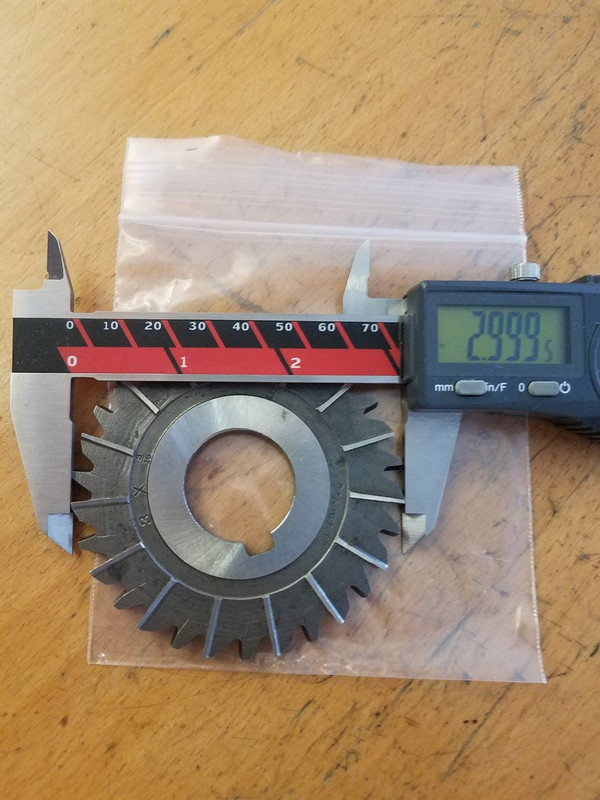I need to make a circular slot that has a 1.5" radius. Tough part is that I can't reach deep enough into the cut if the shaft is bigger than 3/4".
So I think that means I need a blade with a 1/2" diameter hole. Unobtanium?? I dont want to pay $300 for a custom blade from harvey as this is a continuing production operation and I expect alot of wear.
There are plenty of relatively inexpensive cutters that otherwise fit the bill except they have a 1" hole, so that means an even bigger shaft outside that hole..not going to work. Cant grind them down because that shaft diameter is the material clamping the saw.
Seems like making an arbor adapter would also be tricky as it would have to be welded to the blade and then ground down below the surface of the teeth.
So I think that means I need a blade with a 1/2" diameter hole. Unobtanium?? I dont want to pay $300 for a custom blade from harvey as this is a continuing production operation and I expect alot of wear.
There are plenty of relatively inexpensive cutters that otherwise fit the bill except they have a 1" hole, so that means an even bigger shaft outside that hole..not going to work. Cant grind them down because that shaft diameter is the material clamping the saw.
Seems like making an arbor adapter would also be tricky as it would have to be welded to the blade and then ground down below the surface of the teeth.


 .......clamped the thin cutter to a faceplate and worked from there.
.......clamped the thin cutter to a faceplate and worked from there.